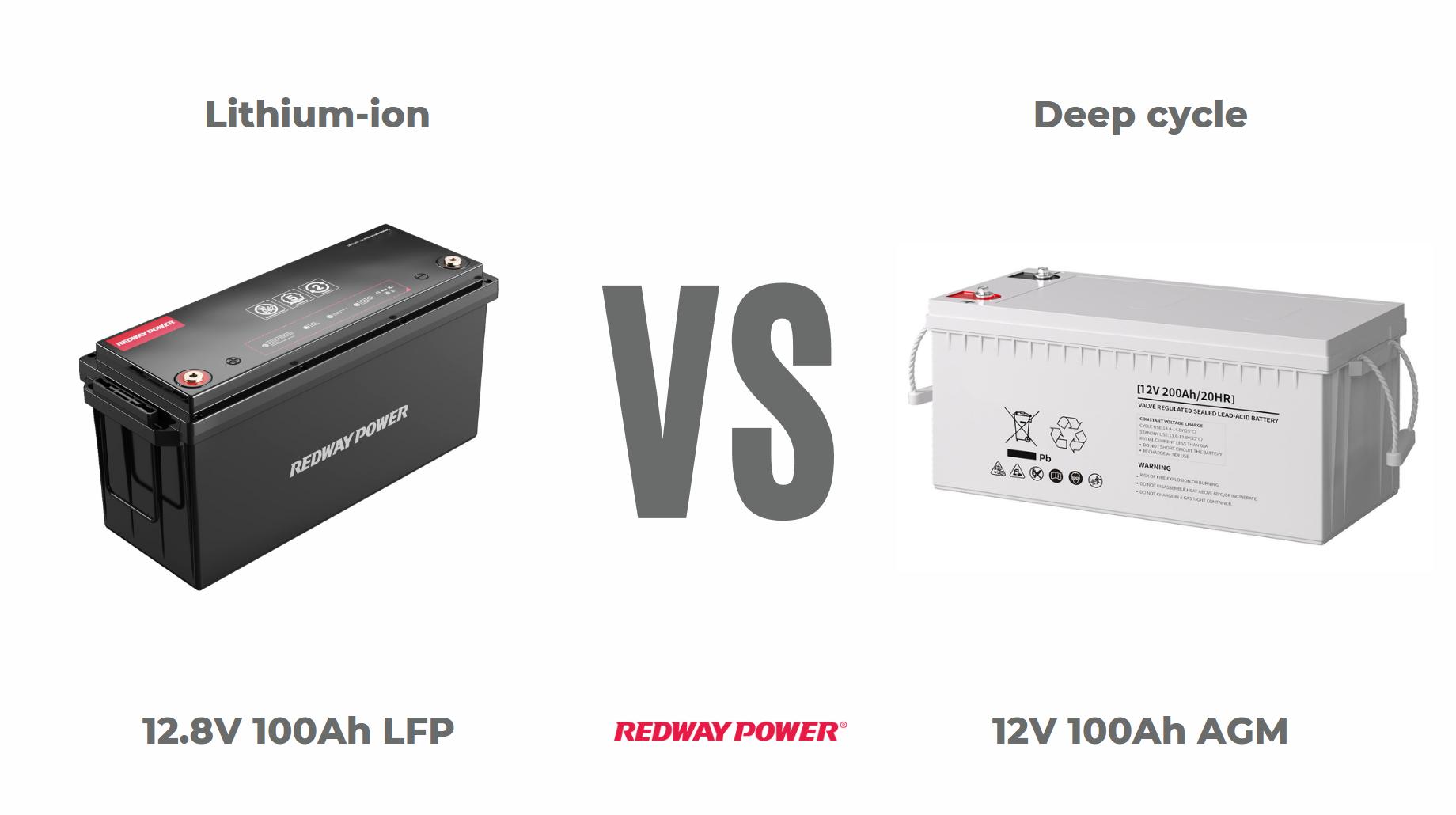The primary difference between lithium-ion batteries and deep cycle batteries lies in their design, functionality, and intended applications. While lithium-ion batteries can be used for deep cycling, not all lithium-ion batteries are specifically designed as deep cycle batteries. Understanding these distinctions is crucial for selecting the right battery for your needs.
1. Battery Chemistry and Design
Lithium-Ion Batteries
- Chemistry: Lithium-ion batteries utilize lithium compounds as the anode material, which allows for high energy density and efficient energy storage.
- Design: They are generally lighter and more compact than traditional deep cycle batteries, offering greater power density.
- Applications: Commonly found in consumer electronics, electric vehicles (EVs), and renewable energy systems.
Deep Cycle Batteries
- Chemistry: Typically consist of lead-acid technology (flooded, AGM, or gel) designed specifically for deep discharges.
- Design: Features thicker plates that can withstand repeated discharges without significant damage.
- Applications: Used in applications requiring sustained power over time, such as RVs, marine vessels, and solar energy storage.
2. Depth of Discharge (DoD)
- Lithium-Ion Batteries: Can often be discharged up to 80% to 100% of their capacity without significant degradation. This allows for more usable energy compared to lead-acid options.
- Deep Cycle Batteries: Generally recommended to discharge only up to 50% of their capacity to prolong lifespan. Discharging below this level can lead to reduced cycle life.
3. Cycle Life
- Lithium-Ion Batteries: Typically offer a much longer cycle life, ranging from 2,000 to 5,000 cycles, depending on usage and depth of discharge.
- Deep Cycle Batteries: Lead-acid deep cycle batteries usually provide around 200 to 500 cycles, significantly less than lithium counterparts.
4. Charging Speed
- Lithium-Ion Batteries: Capable of fast charging, often reaching full charge in a few hours. They can handle higher charging currents without damage.
- Deep Cycle Batteries: Generally charge at a slower rate, with charging speeds around 10% to 20% of their capacity. Fast charging is not typically recommended.
5. Weight and Size
- Lithium-Ion Batteries: Lighter and more compact than traditional deep cycle batteries, making them easier to handle and install.
- Deep Cycle Batteries: Heavier due to the lead content; size may vary based on type (flooded vs. AGM vs. gel).
6. Maintenance Requirements
- Lithium-Ion Batteries: Maintenance-free; do not require electrolyte checks or water refills.
- Deep Cycle Batteries: Flooded lead-acid batteries require regular maintenance, including checking electrolyte levels and adding water.
7. Cost Considerations
- Lithium-Ion Batteries: Generally more expensive upfront but may offer lower total cost of ownership over time due to longer lifespan and fewer replacements.
- Deep Cycle Batteries: Lower initial cost but may require more frequent replacements due to shorter lifespan.
Latest News on Battery Technology
- Innovations in lithium-ion technology are leading to improvements in energy density and safety features.
- The demand for lithium-ion batteries is rising as industries shift towards renewable energy solutions.
- New recycling initiatives are being developed for both lithium-ion and lead-acid batteries to promote sustainability.
Redway Expert Comment“In our experience at Redway Battery, the choice between lithium-ion and deep cycle batteries depends on your specific application needs. While lithium-ion offers superior performance characteristics like longer cycle life and faster charging, traditional deep cycle batteries may still be suitable for certain cost-sensitive applications. Understanding your energy requirements will help you make the best decision.” ConclusionThe differences between lithium-ion and deep cycle batteries are significant in terms of chemistry, design, depth of discharge capabilities, cycle life, charging speed, maintenance requirements, and cost. By evaluating these factors against your specific needs, you can select the most appropriate battery type for your application.



